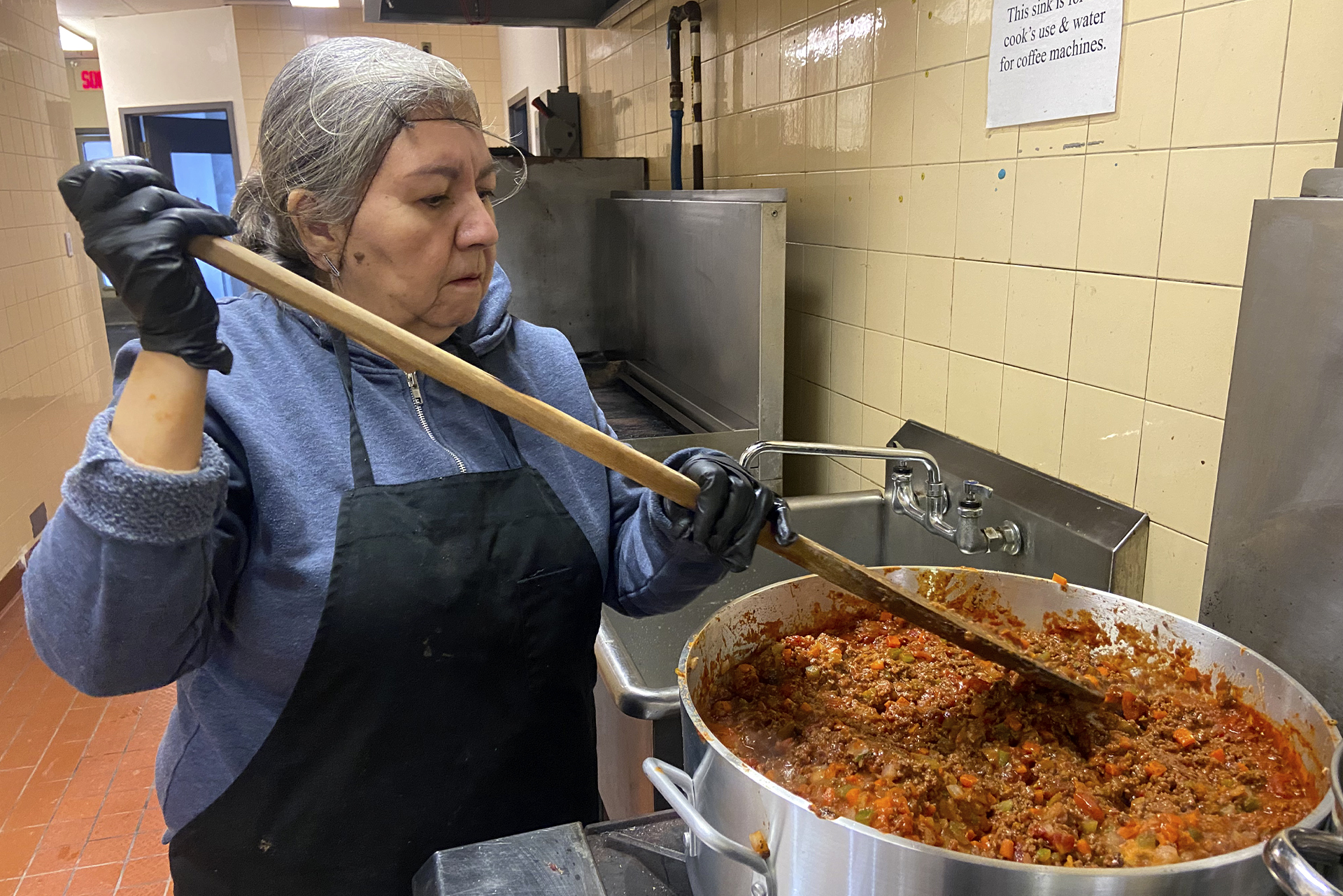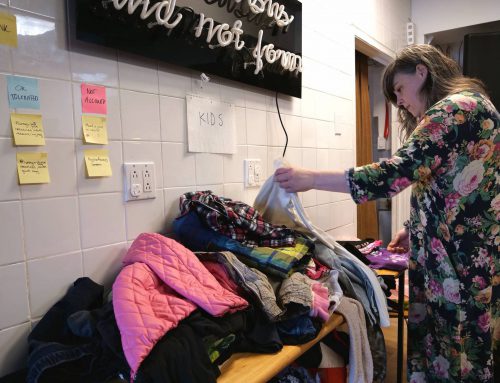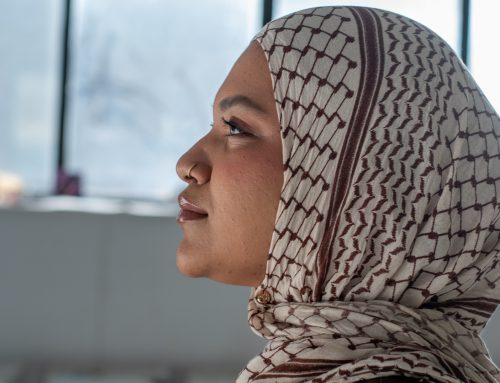BY Arthur Le Saux & Rowan Kennedy
Lucienne Ambroise is preparing caribou to taste, cutting thin strips from a thick slab of game for people invited to the Ste-Catherine Street West Lighthouse Church.
It’s the opening night at Mitshuap Raphaël-Napa-André. Ambroise, a cook at the shelter, says special occasions call for caribou, an Innu tradition.
“It’s Indigenous people providing for Indigenous people,” says Ambroise, who is from an Innu community 11 hours north of Montreal, called Maliotenam.
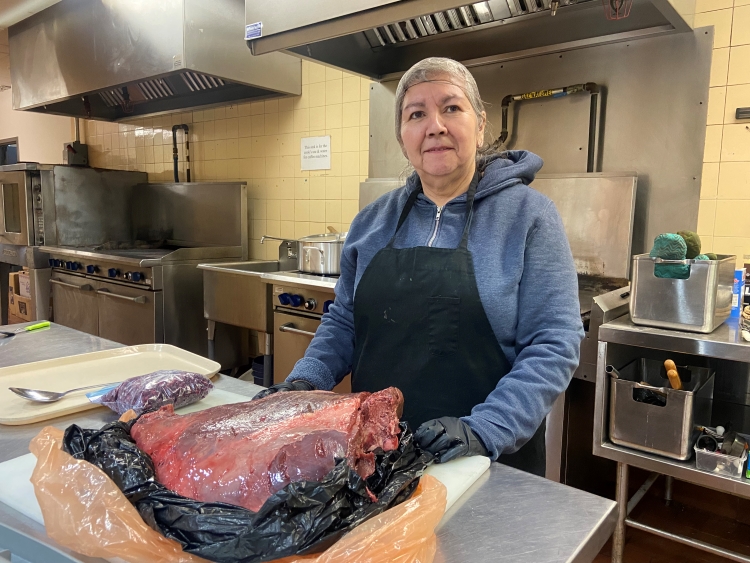
Lucienne Ambroise preparing caribou for opening night. Photo by Rowan Kennedy.
Mitshuap translates to “home” in Innu. The Indigenous-led initiative was months in the making, but the province has only agreed to fund it until April 30, 2023.
Shelter coordinator Alexandra Ambroise says one of the problems with short-term funding is retaining staff. She says people have to be dedicated to the cause, rather than looking for financial stability. “You can see by talking to them or in their face that they are not coming for the salary, but to help these people,” says Ambroise. “It’s the place of last resort.”
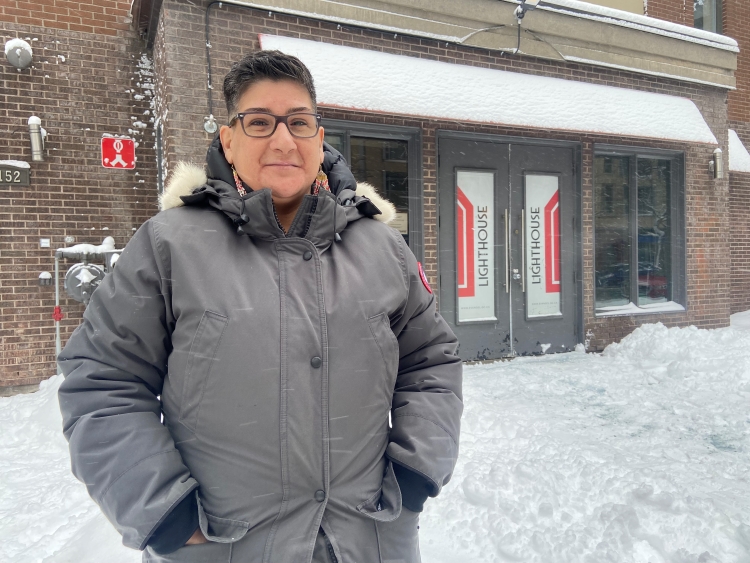
Alexandra Ambroise in front of the Lighthouse Church. Photo by Rowan Kennedy.
In the meantime, thirty people can count on a warm meal and a mattress every day of the week from 8 p.m. to 7 a.m.
The warming shelter is around the corner from Cabot Square, a park serving as a hub for people experiencing homelessness.
“In the image of the Raphael “Napa” André tent, it’s a follow-up that will have the same services,” says Ambriose. The City of Montreal helped Mitshuap Raphaël-Napa-André find a suitable location for the shelter. It has signed an agreement with the church to pay rent until May.
The project is a memorial to Raphaël “Napa” André, a 51-year-old Innu man who was found frozen to death steps away from a Montreal shelter near Milton St. and Parc Ave. in January 2021. Within a month, a warming tent was erected at Cabot Square with room for 15 people overnight.
The tent was taken down by the City of Montreal in Spring 2022. The location where it stood was replaced with a skating rink for winter 2023.
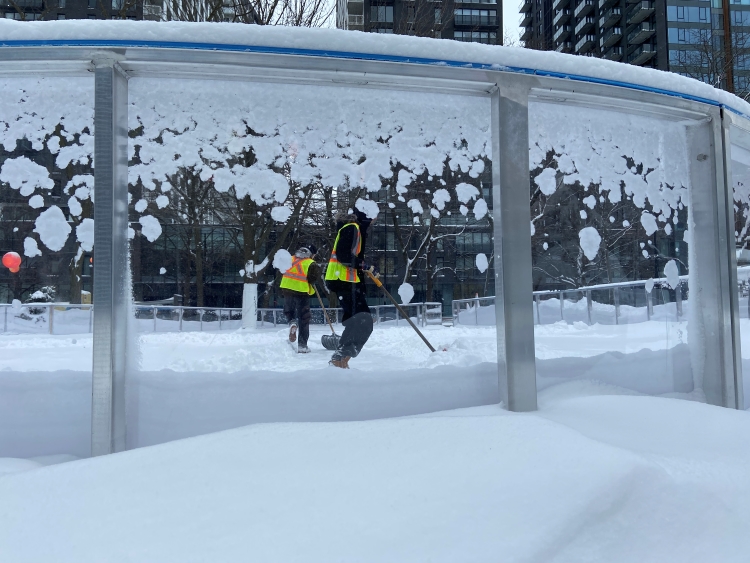
City workers working on the rink that replaced last year’s shelter. Photo by Rowan Kennedy.
The homeless crisis is an issue Mamit Innuat, a non-profit representing four Innu Nations, recognizes in Montreal despite being based in Sept-Îles. Census data in 2018 shows Indigenous people make up 12 percent of the city’s homeless, despite representing less than one percent of the population.
The organization helped fund the Mitshuap Raphaël-Napa-André in November 2022.
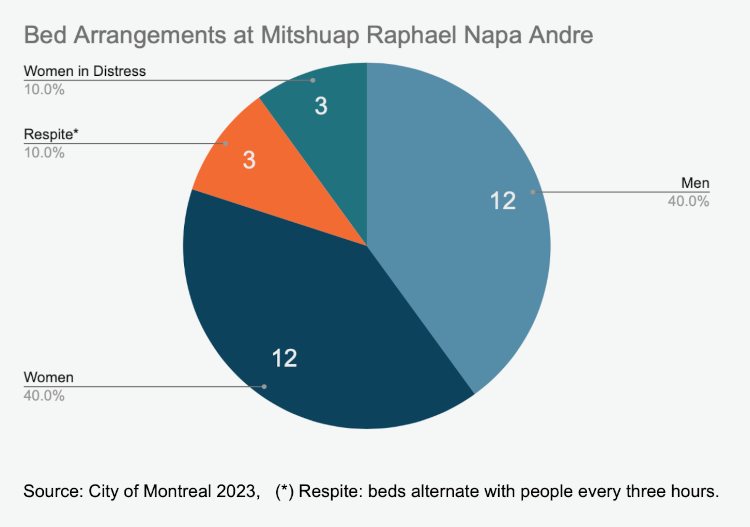
Distribution of the beds at Mitshuap Raphaël-Napa-André. Chart by Arthur Le Saux.
“We want to bring our Indigenous side, our Indigenous food and culture here to help,” says Director Thérèse Ambroise Rock.
She says many Innu people experiencing homelessness don’t feel welcome in other shelters because she says resources don’t consider cultural differences. Ambroise Rock says having a shelter run by the Indigenous community is a step in the right direction.
“It’s really about cultural security,” says Ambroise Rock.
David Chapman runs Resilience Montreal, a shelter across the street from Cabot Square. It serves lunch five days per week. Chapman says more people have been asking for help in the neighbourhood since the tent was shut down. He says the new initiative will help address the needs of Cabot Square.
“Part of being effective as an emergency resource is being where the people are. For decades, Indigenous populations have been in and around Cabot Square park, it’s what only makes sense to have a resource that is here, run by Indigenous populations, and easily accessible. In the long term, it will save lives,” says Chapman.
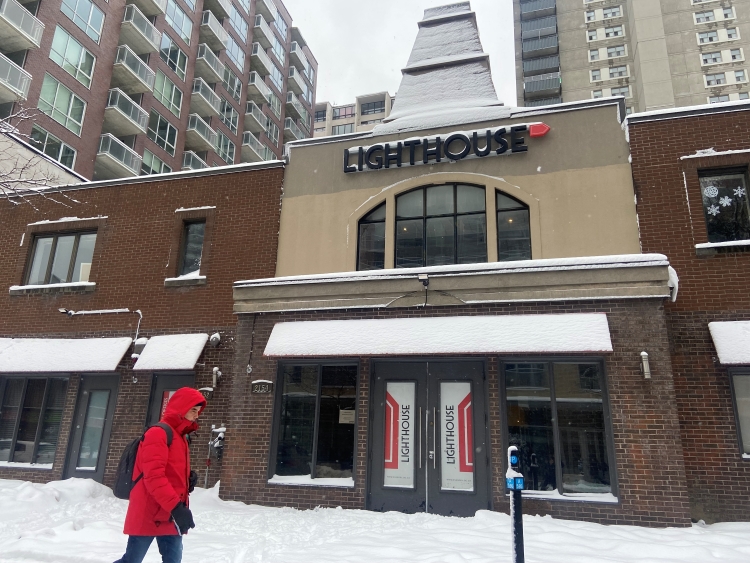
View of Lighthouse Church off of Ste-Catherine Street West. Photo by Rowan Kennedy.
Chapman also hopes Mishuap -Napa- will become a permanent resource.
But fundraising issues are nothing new for organizations like his and Mitshuap Raphael “Napa” André.
“We still need to raise $400,000 before the beginning of April,” says Chapman.
Despite the city and province helping to find the location to run the shelter, sustained funding is still elusive, which makes finding workers a challenge.
“I would like there to be a yearly location. Not something that we need to restart every winter, and double our efforts to find financing,” says Ambroise.
Old Brewery Mission President-CEO James Hughes says a mix of emergency and medium-term initiatives are needed to help keep people experiencing homelessness safe.
But he says the answer long-term is having fewer unhoused people, which he says starts with fixing the housing market.
“The organizations like Old Brewery and our partners, we’re getting increasingly effective at getting people out of homelessness. The problem is that more people are coming in,” says Hughes.
He wants the City of Montreal to improve protection against rent increases and long-term resources for people transitioning out of homelessness.
In a statement, a spokesperson for the mayor’s office, Catherine Cadotte writes “[Emergency resources] should not be an end in themselves. We want funding and the establishment of permanent and adapted resources, and we clearly communicate that to the Government of Quebec.”
Quebec’s ministry of Indigenous affairs says it reserved $14,000,000 over five years for projects that are adapted to the needs of Indigenous peoples experiencing homelessness in the province.
A long-term project to house Indigenous Quebecers in situations of homelessness recently opened its doors. Video by Rowan Kennedy.
The ministry says it’s invested in projects like Maison PAQ in Montreal, a permanent housing initiative for close to 20 people transitioning out of homelessness which opens at the end of February 2023.
Putulik Qumak has frequented Cabot Square for nearly 20 years and is currently living in a transitional housing unit with the Projets Autochtones du Quebec. Qumak says he’ll be using the shelter if he ever needs it.
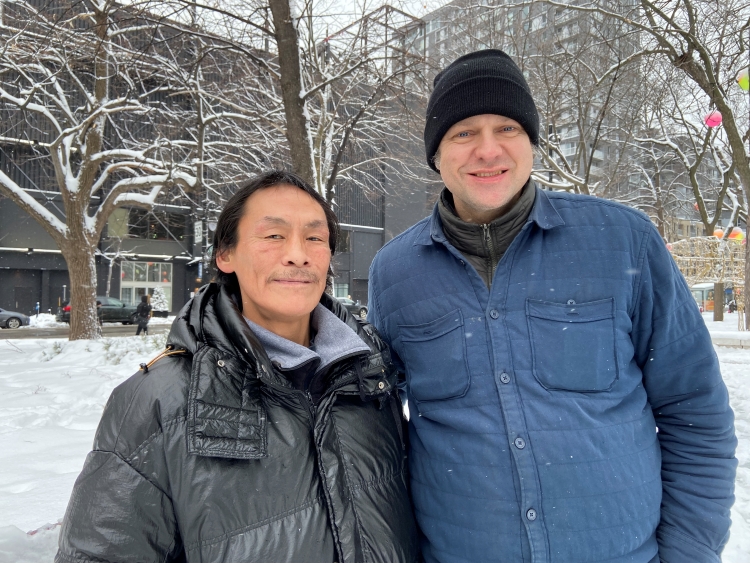
Chapman and Qumak posing for a photo in Cabot Square. Photo by Rowan Kennedy.
“I think it’s gonna help our community here, the challenges we have with our community, Indigenous people,” says Qumak about Mitshuap Raphaël-Napa-André. “It’s got a lot of potential.”
